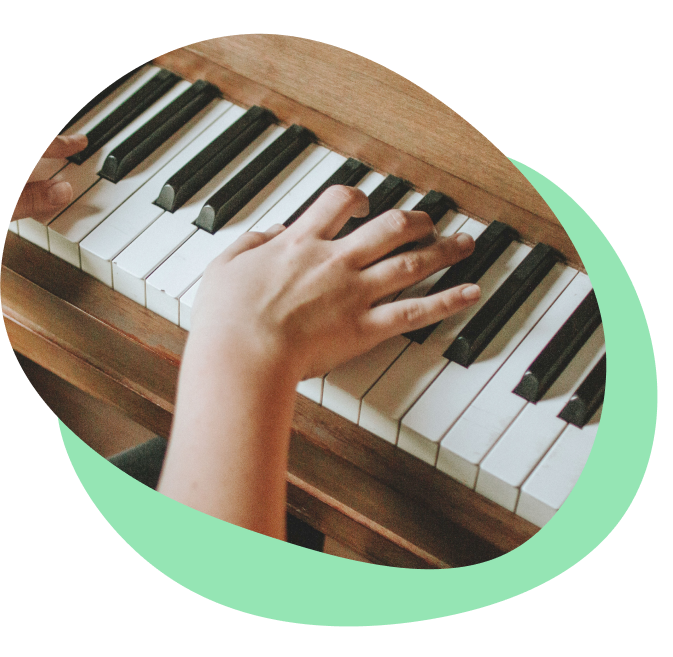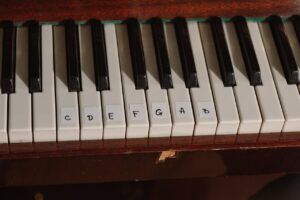To play the E minor piano chord, start by finding the note E, which is directly to the right of the group of two black keys. Once you’ve found it, combine E with G and B to create the E minor triad. Skoove is here to show you the easiest finger positions to get started. We will also take a look at some beginner friendly chord progression and some great songs that use a E minor triad so you can get playing it in no time. Let’s get learning!
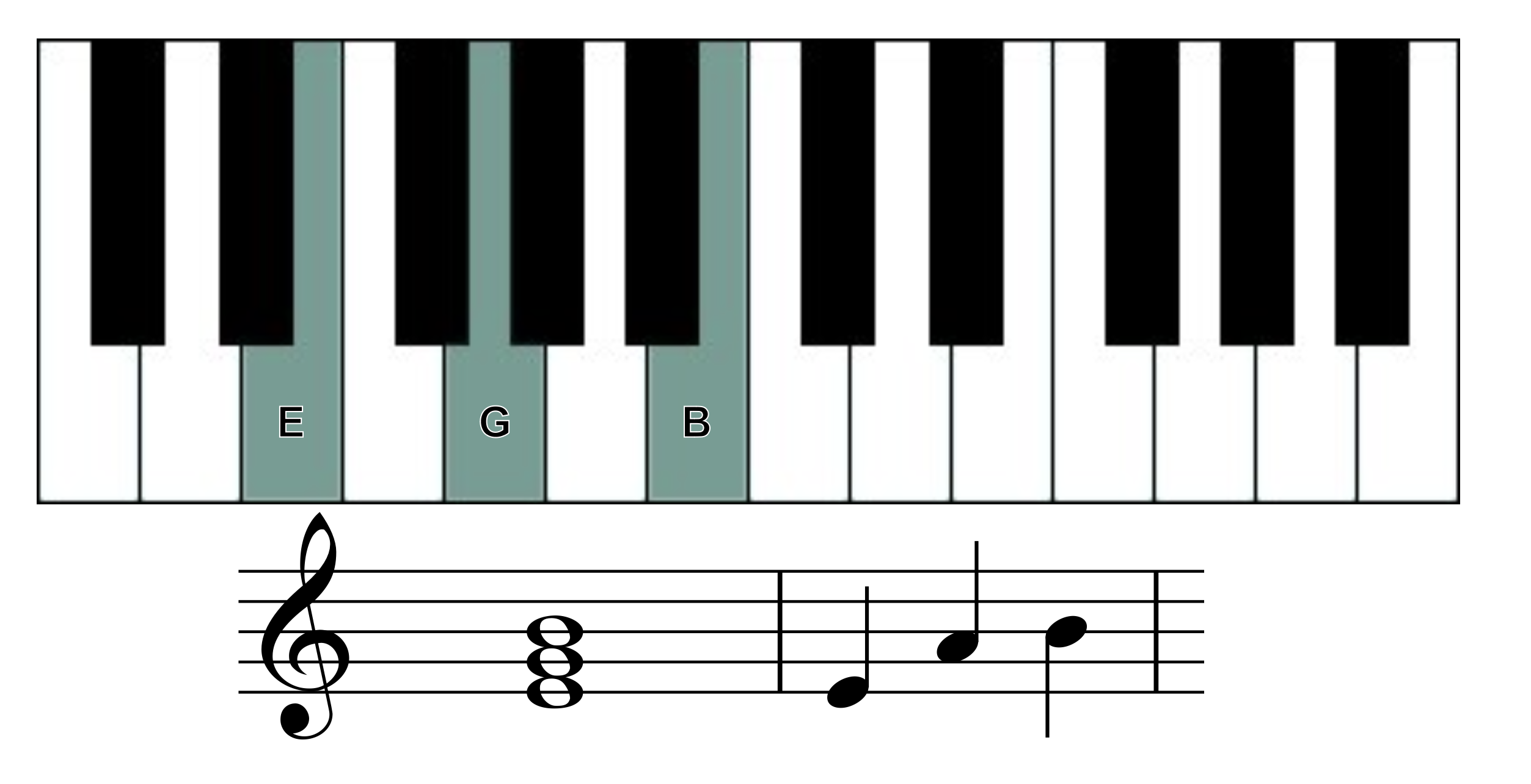
How to play the E minor chord in root position
The E minor chord has three notes E, G and B. These notes together make a minor triad, which gives this chord its distinct sound.
To play this chord in its root position (basic form) with your right hand, use these fingers:
- B – Fifth finger (5)
- G – Third finger (3)
- E – Thumb (1)
For the left hand, use the following fingers:
- B – Thumb (1)
- G – Third finger (3)
- E – Fifth finger (5)
What are the inversions of the E minor chord?
The inversions of an Em chord can be found by altering the order of the notes. Although the note order changes you are still playing the same chord. These easy chord variations let you play with more nuance.
How to play E minor chord 1st inversion?
To play E minor first inversion, start with G as the bottom note. Next, play B above it and finally, add an E on top. This creates a different voicing that can be used for smoother chord transitions.
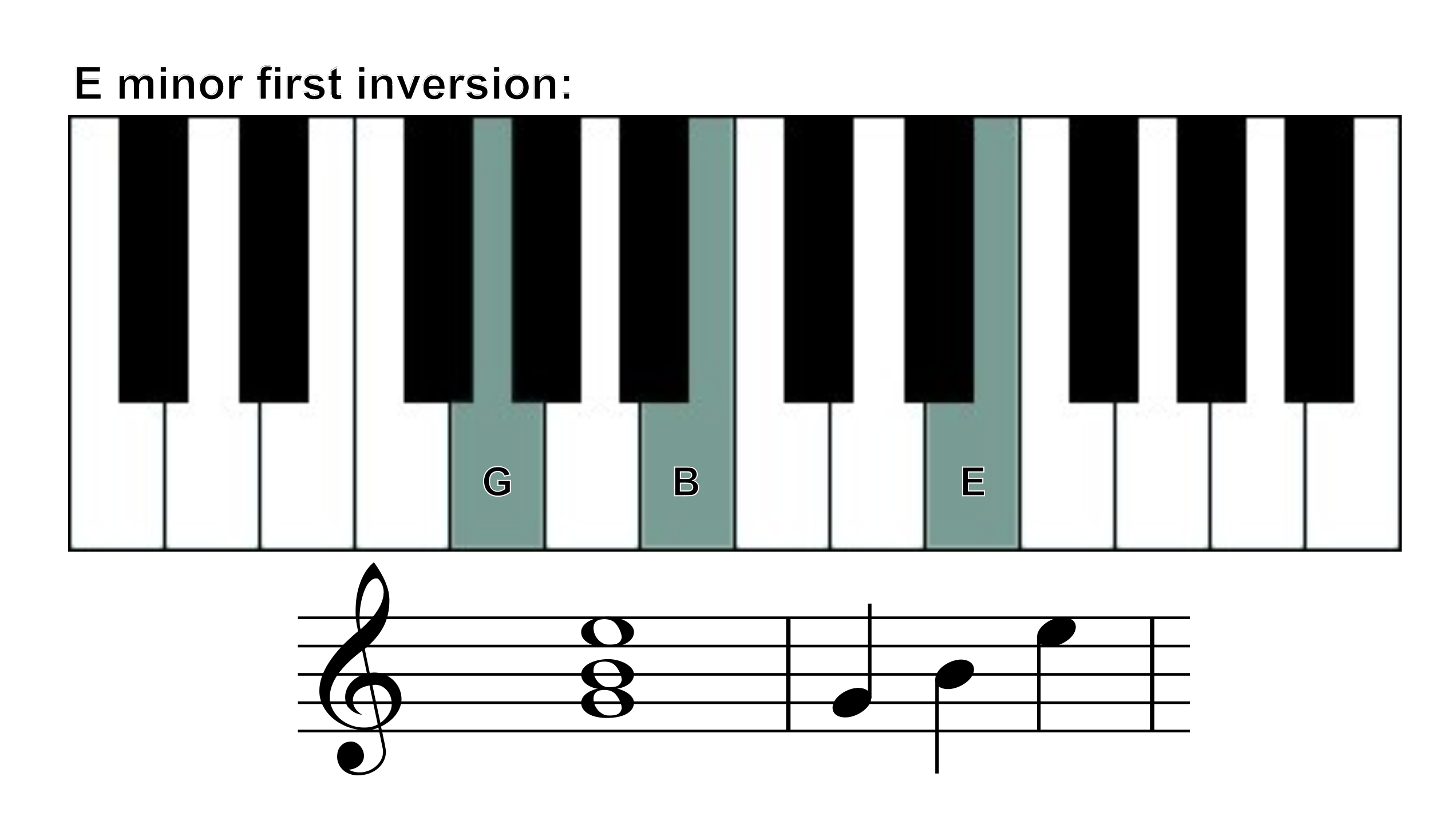
For the right hand, use these fingers:
- E – Fifth finger (5)
- B – Middle finger (3)
- G – Thumb (1)
For the left hand, use these fingers:
- E – Thumb (1)
- B – Third finger (3)
- G – Thumb (1)
How to play E minor 2nd inversion?
To play E minor in second inversion, start with B as the low note. Then you can add an E above it and finally put a G on top. This note switch up creates a new feeling for the chord. This small change can make chord progressions flow more naturally.
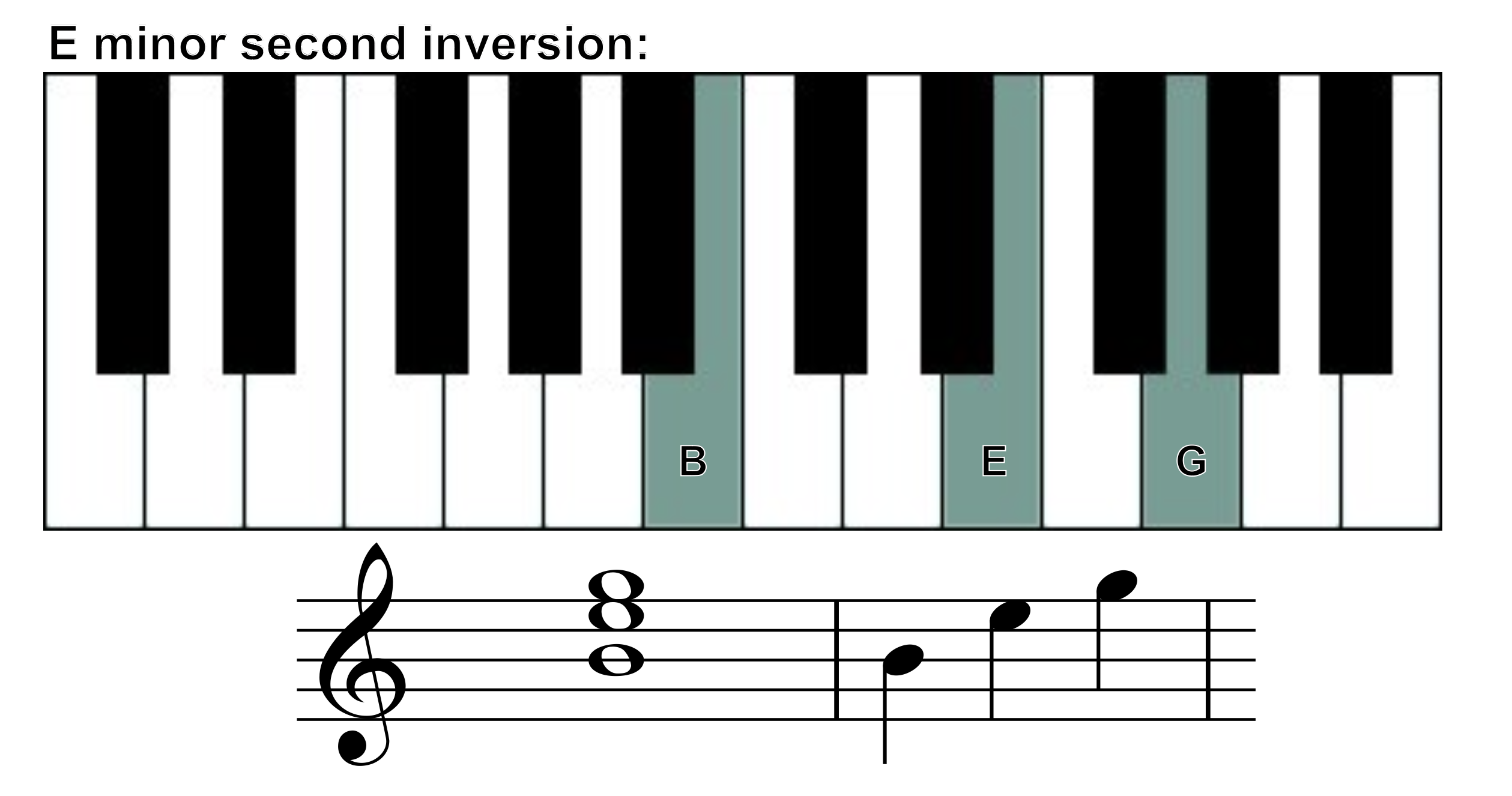
For the right hand, use these fingers:
- G – Middle finger (3)
- E – Fifth finger (5)
- B – Thumb (1)
For the left hand, use these fingers:
- G – Thumb (1)
- E – Second finger (2)
- B – Fifth finger (5)
Common chord progression in the key of C minor
E minor chord progressions come up in lots of musical genres, pop and rock to jazz and even classical. An Em chord progression often uses chords like Em, Am, B and C. Here are some great beginner friendly chord progressions to get you going:
- Em – Am – B – Am
- Am – Em – Am – B
- Em – C – Am – B
- Am – B – Am – Em
Playing these chord patterns regularly will improve your familiarity with E minor chords and keys on piano and make transitions between chords feel more natural. They are also a great way to put your knowledge of piano chords to the test. If you want to learn more check out Skoove’s tailor made beginner chord progression courses.
Popular songs to play with the Em piano chord
The E minor chord is featured in many popular songs across various genres. Below are some well-known songs that make great use of the Em chord.
Adventure of a Lifetime – Coldplay
Back to You – Selena Gomez
Piano chords generator
💡 If you are reading this from a mobile device, rotate it to display the tool in full width.
1. Click on “Chords”
2. Choose the “Root” of the chord
3. Choose the “Chord qualities” (major, minor, etc.)
4. Click “Display”
Author of this blog post:
Matthew Dickman

With over a decade of experience in music education Matthew holds a BA in Music from Paul McCartney’s LIPA and an MA in Composition from the University of Salford. Mathew has developed a distinctive compositional voice and approach to music theory education through his research and work in the music industry. Matthew’s writing for Skoove combines experience from orchestral and media composition, and as a gigging jazz musician, to create a wholistic and accessible pedagogy for musicians of any level. Away from music, he enjoys reading and exploring nature to expand his horizons and knowledge contributing to his holistic teaching style.




